Easter is an important celebration in Italy, and it’s marked across the country by days off work, processions, and plenty of food. Here’s a rundown of what to expect from ‘Pasqua’.
What are the dates?
Easter Sunday (Pasqua in Italy) and Easter Monday (Pasquetta) fall on April 9th and April 10th respectively this year.
But, while both days are national holidays in Italy, Good Friday (or Venerdì Santo), which falls on April 7th, isn’t.
READ ALSO: Why is Good Friday not a holiday in Italy?
How does Italy celebrate?
In some areas of the country, especially in the south, religious ceremonies are held as early as the Sunday before Easter.
Nationwide celebrations however generally start on Good Friday, which is when Christians commemorate the crucifixion and death of Jesus.
Countless Via Crucis (‘Way of the Cross’) processions take place all around the country on the day, with the most popular one being held in Rome on Friday evening.
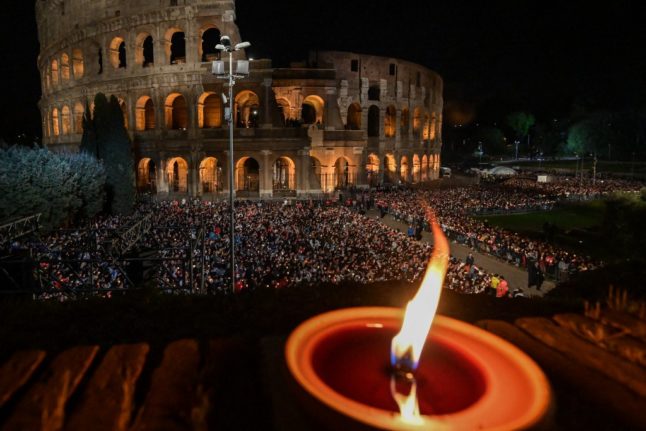
Celebrations are paused on Sabato Santo (Holy Saturday), which is a day of collective mourning and contrition, only to resume on Easter Sunday, the day of Jesus’s resurrection according to Christian tradition.
After attending morning mass, Italians spend the remainder of Sunday in the company of their families and more immediate relatives, with the lunch-plus-pennichella combo being by far the most popular activity on the day.
Finally, on Monday (known as Pasquetta, or ‘little Easter’), most people venture on a gita fuori porta and enjoy some time together with their closest friends.
Things to see
Centuries-old processions
While most cities in Italy hold processions to commemorate Jesus’s journey to his own crucifixion (Via Crucis), some events in the centre and south of the boot follow rituals dating as far back as the 9th century AD.
Every year on Good Friday, around 3,000 men from local Catholic societies, each donning a white hood and carrying a torch, march through the streets of Enna, Sicily, shouldering statues of the Virgin Mary and Jesus.

A similar procession unfolds in Chieti, Abruzzo, with hooded figures carrying seven imposing trofei, i.e. items that are reminiscent of the Passion of Christ.
Finally, in the evening of Giovedi Santo (Holy Thursday), a number of bare-footed cross-bearers dressed in black robes walk down the streets of Noicattaro, Puglia in one of the most intense Via Crucis performances in the country.
Passion of Christ re-enactments
Barile, in the southern Basilicata region, holds one of the most unique Easter performances in Italy as the show, which involves over 100 actors, mixes characters from the Bible with local folklore figures such as the gypsy woman and the Moor.
The town of Romagnano Sesia, Piedmont, is also well-known for its Passion of Christ re-enactment, a tradition dating back to 1729. The show is generally spread over four days (from Holy Thursday to Easter Sunday) and includes as many as 26 different acts.
Events in big cities
Celebrations in major cities are generally much less history-imbued than they are in smaller towns and villages. But, traditional events survive in some locations.
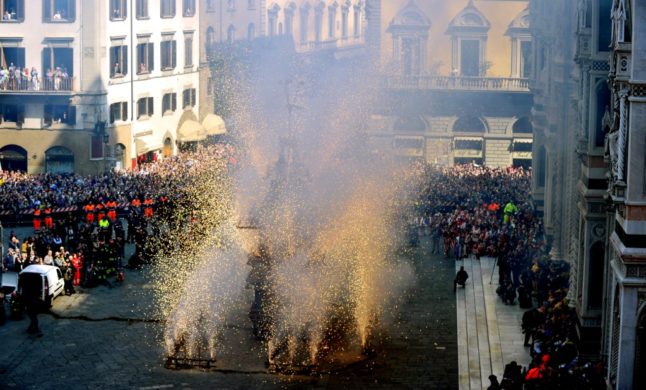
Italy’s biggest Easter procession will take place in Rome on Good Friday, with thousands of faithful following the Pope from St Peter’s Square to the Colosseum.
Florence will instead hold the iconic Scoppio del Carro on Easter Sunday, with a two-story wagon packed full of fireworks being lit up in the city’s central Piazza Duomo.
What’s on the menu?
Easter lunch generally starts with a primo, whose nature varies greatly from region to region. So, while people in Sicily may have sciusceddu (a meatball and egg soup) as their first course, people in Liguria may start their lunch with a slice of torta pasqualina (a quiche with spinach, eggs and cheese).
Lamb, the centrepiece of the Easter eating experience in Italy, will be the secondo of choice of most Italian families, with recipes once again varying from region to region, or at times even from family to family.
READ ALSO: 11 Italian Easter foods you should try at least once
The lamb-based dish is generally accompanied by vegetables, with artichokes being a very popular side in the centre and south of the country.
Finally, no Easter lunch is truly complete without an exceedingly high-calorie dessert, which could be anything from timeless classics such as the colomba pasquale and the Neapolitan pastiera to lesser-known treats such as sanguinaccio dolce (pig’s blood and chocolate pudding) and pan di Ramerino (sweet raisin bread flavoured with rosemary).
La Colomba tradizionale delle Valli del Natisone al Paradiso dei golosi a San Pietro Così i nostri nonni festeggiavano la #Pasqua. Il maestro pasticcere Daniele le ha riscoperte per la #Pasqua2023 pic.twitter.com/1lIj8HktPN
— Tommaso Cerno (@Tommasocerno) March 29, 2023
What will the weather be like?
Sadly, it’ll be a wet and chilly Easter break for many people in the country.
A cold air front from northern Europe will move down along the peninsula on Saturday, April 8th with all central regions expected to see localised showers of medium intensity and daytime temperatures dropping as low as 10C in some areas.
Conditions will generally worsen on Easter Sunday, with all central and southern regions forecast to be hit by rainstorms during the day.
READ ALSO: WEATHER: Italy braced for wet and chilly Easter weekend
Finally, the weather should improve on Easter Monday, though some isolated rain showers might persist in Calabria, Puglia, Basilicata and eastern Sicily.
The rest of the country will enjoy clear skies on the day, but temperatures around the boot will largely remain below season averages, with Bolzano alone expected to record 20C or more on the day.
Should you expect heavy traffic?
As over eight million people in Italy are currently expected to travel over the upcoming Easter long weekend (or ponte), heavy traffic is very likely.
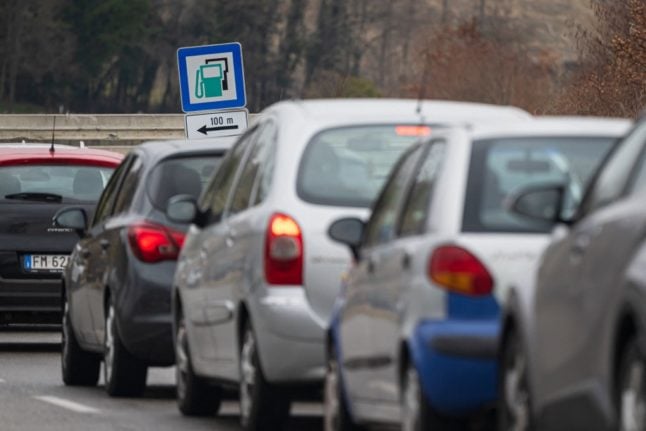
According to forecasts from the Italian State Police, Good Friday and Easter Monday will both be marked by very heavy traffic with “possible critical conditions”.
READ ALSO: What will Italian roads look like over Easter weekend?
Roads are expected to see some very intense congestion in the morning of Saturday, April 8th too, whereas Easter Sunday should be a better day for drivers overall.
As in previous years, motorways (or autostrade) connecting the north of the country to the south and state roads (or strade statali) connecting big cities to popular coastal or countryside locations are the most likely to be affected by heavy traffic over the Easter break.

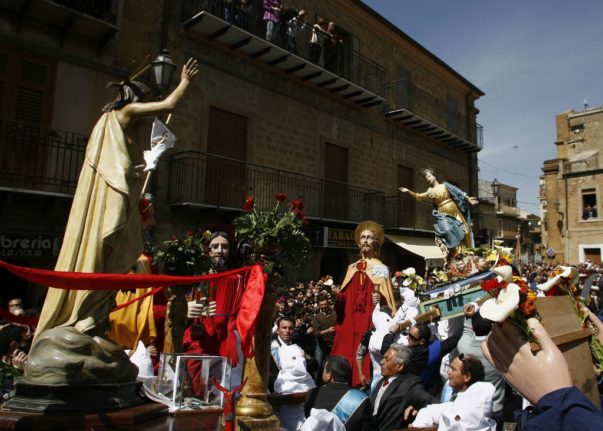
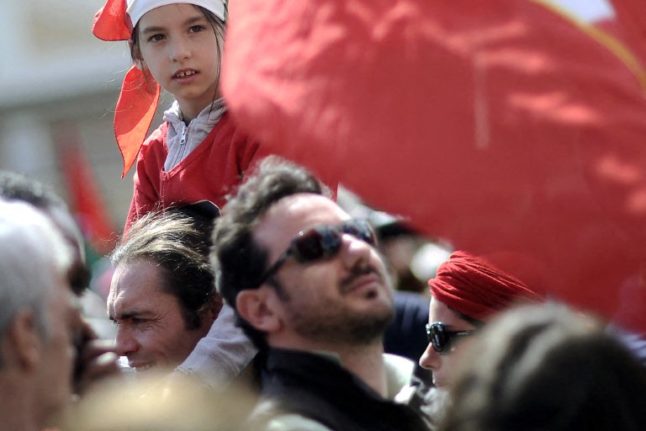
 Please whitelist us to continue reading.
Please whitelist us to continue reading.
Member comments